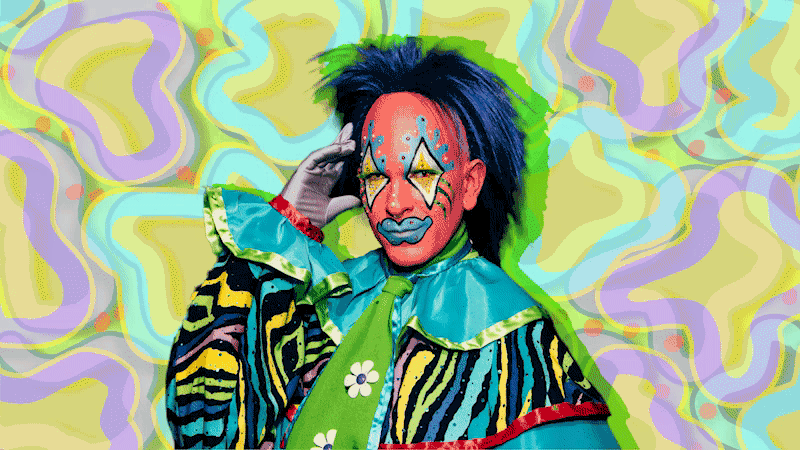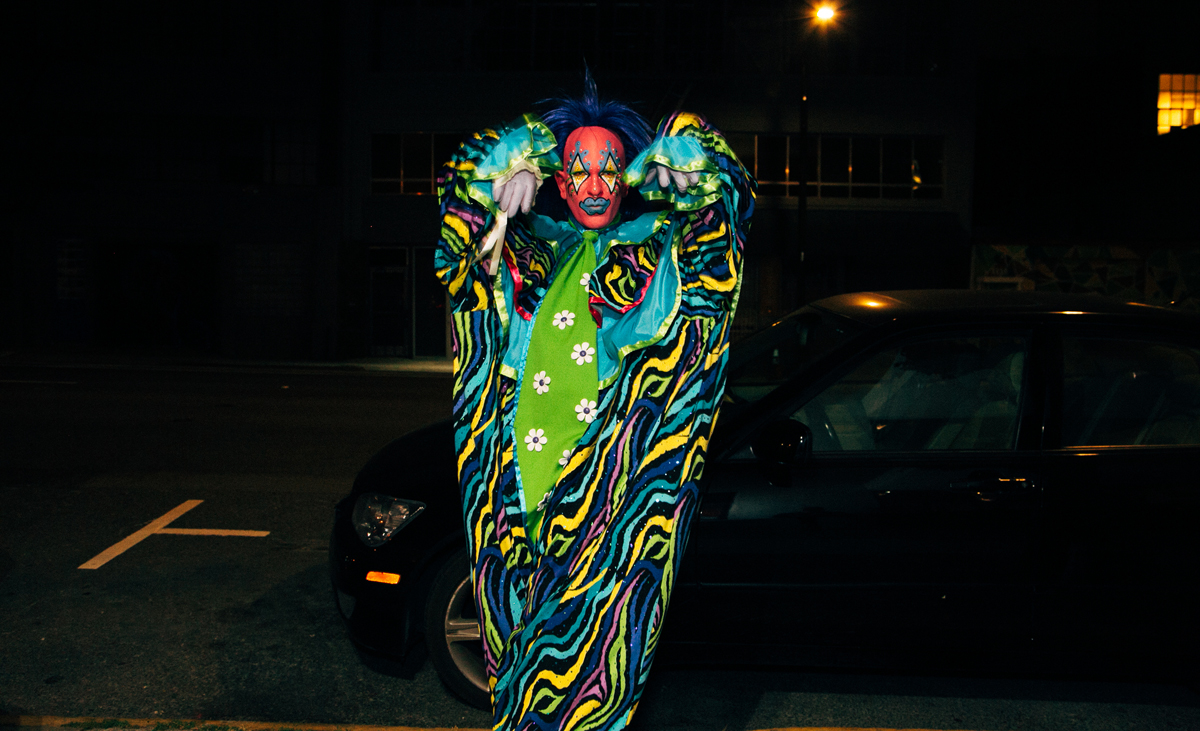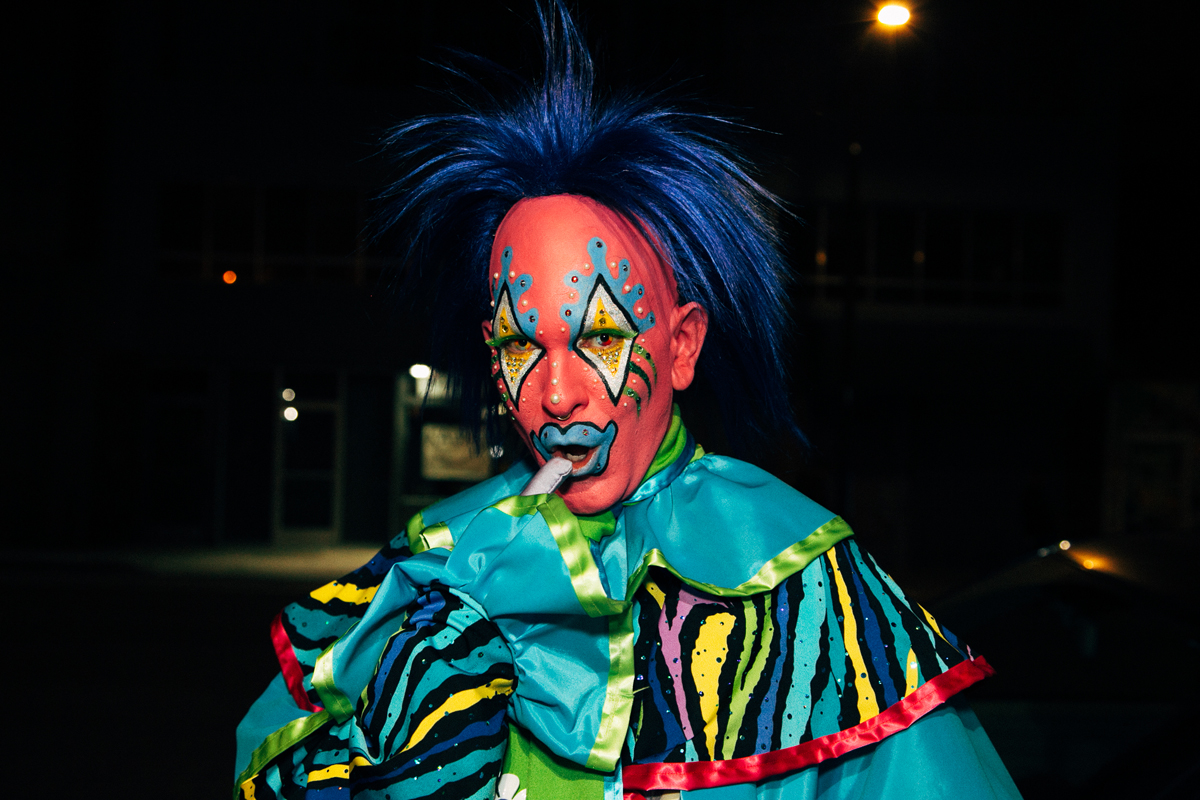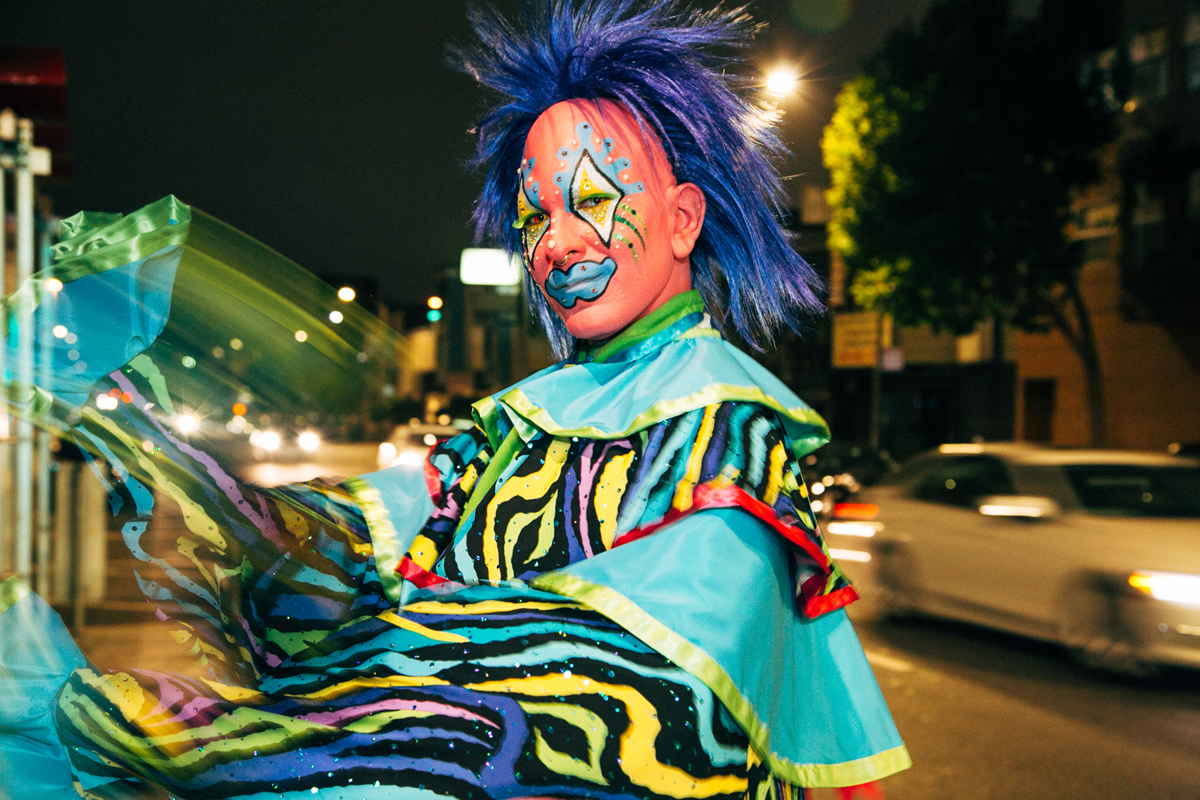Editor’s Note: The Changing Face of Drag is a five-part KQED Arts series spotlighting innovative performers pushing the boundaries of drag in the Bay Area. Click to read more about the series.
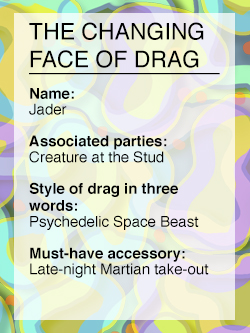
Topless dancers hang from aerial hoops as a bald figure, with skin painted entirely red, struts across the stage to the Deftones’ tempestuous alt-rock hit “Change (In the House of Flies).” Black tentacles, like Ursula’s in The Little Mermaid, hang from the leather apron covering his torso, and devilish, vinyl bat wings protrude from his back. He flares the wings slowly while descending into a squat, in time with a crescendo of thundering guitars and drums—a total power move, like a sci-fi villain flexing his might.
This is drag in San Francisco in 2018—and Jader, the performer on stage at SOMArts this night in April, is among an exciting new breed of artists pushing the boundaries of the art form.
As I approach Jader’s SoMA apartment building six weeks after his performance at the event, I realize I have no clue what he looks like under the theatrical, alien-like makeup he wears for his shows. When I arrive at the gate, a white man in his thirties answers the door looking comparatively naked with his shaved head, black button-down shirt and jeans, with only a septum ring adorning his face.
All smiles, Jader apologizes for the cat’s litter box as leads me through the hall and into the living room. I eye a packed clothing rack of dresses, capes, a bodice made out of Viking shin guards and a red dress with vinyl piping that looks almost inflatable. The folded bat wings he wore at SOMArts protrude from the row of garments, hanging next to the bondage-y, latex seal tail and flippers; Jader’s accessorized them with a leather choker and dental cheek retractors for a performance piece at Untitled Art Fair.
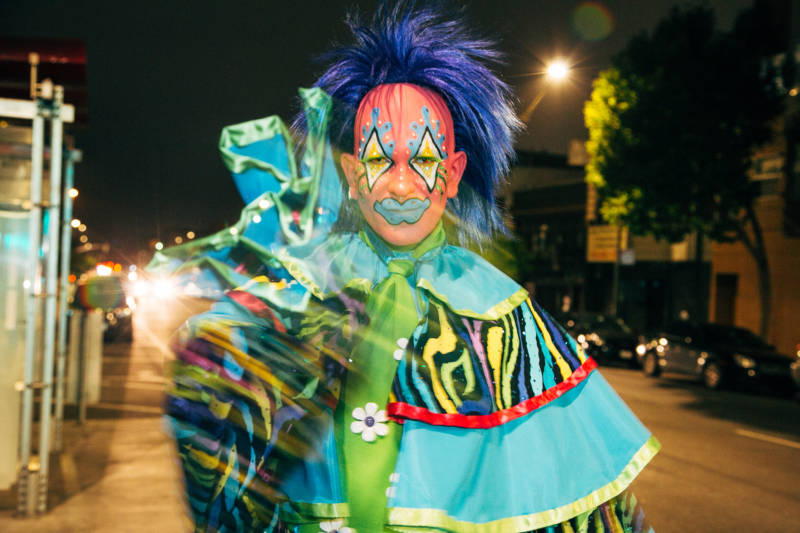
Jader’s nocturnal schedule of bartending at the Great American Music Hall—plus some shifts at Costumes on Haight, his second job—allow him the free time and access to materials to create these intricate, shapeshifting looks.
